中国组织工程研究 ›› 2019, Vol. 23 ›› Issue (26): 4194-4199.doi: 10.3969/j.issn.2095-4344.1359
• 纳米生物材料 nanobiomaterials • 上一篇 下一篇
载阿霉素壳聚糖纳米粒子可抑制小鼠骨肉瘤
李永恒,崔 岩,张治宇
- 中国医科大学附属第四医院,辽宁省沈阳市 110032
Inhibitory effects of doxorubicin-loaded chitosan nanoparticles on osteosarcoma in mice
Li Yongheng, Cui Yan, Zhang Zhiyu
- the Fourth Affiliated Hospital of China Medical University, Shenyang 110032, Liaoning Province, China
摘要:
文章快速阅读:
.jpg)
文题释义:
高渗透长滞留效应:相对于正常组织,实体瘤组织中血管丰富、血管壁间隙较宽、结构完整性差,淋巴回流缺失,造成某些尺寸的微粒更趋向于聚集在肿瘤组织的性质,促进了载药纳米微粒在肿瘤组织的选择性分布,可增加药效并减少系统不良反应。
被动靶向:根据肿瘤组织的特性,化疗药物趋向于向肿瘤细胞内浓集的性质。纳米载药微粒既可通过高渗透长滞留效应实现化疗药物在肿瘤组织的富集,同时肿瘤微环境也有助于实验合成纳米载药微粒的靶向释放。
背景:近来大量研究证明,纳米载体系统可实现药物在肿瘤组织定点释放或激活,提高局部药物浓度,减少正常组织的药物蓄积,降低不良反应。
目的:分析载阿霉素壳聚糖纳米粒子的细胞毒性及对骨肉瘤的抑制作用。
方法:①细胞毒性实验:采用含载阿霉素壳聚糖纳米粒子(简称载药纳米微粒)的PBS与含游离阿霉素的PBS分别干预鼠源骨肉瘤细胞系K7(均设置0.16,0.31,0.62,1.25,2.5,5,10 mg/L 7个质量浓度),干预24,72 h后,采用MTT法检测细胞存活率;②体内药物分布实验:皮下注射鼠源骨肉瘤细胞系K7建立Balb/c小鼠(长春生物制品研究所有限责任公司提供)肿瘤模型,当肿瘤体积达到200 mm3时,实验组、对照组分别尾静脉注射含载药纳米微粒的PBS与含游离阿霉素的PBS;注射后6,12 h处死小鼠,观察各脏器阿霉素荧光;③体内抑瘤实验:皮下注射鼠源骨肉瘤细胞系K7建立Balb/c小鼠肿瘤模型,当肿瘤体积达到50 mm3时,实验组、对照组分别尾静脉注射含载药纳米微粒的PBS与含游离阿霉素的PBS,空白组注射PBS,4 d注射1次,共6次,每天检测小鼠体质量与肿瘤体积。动物实验方案经吉林大学动物实验中心伦理委员会批准。
结果与结论:①药物作用24 h时,载药纳米微粒与游离阿霉素杀伤骨肉瘤细胞的半数致死率质量浓度分别为2.4,4.2 mg/L;72 h时,载药纳米微粒与游离阿霉素杀伤骨肉瘤细胞的半数致死率质量浓度分别为0.29,0.91 mg/L;②载药纳米微粒主要在肝脏、肾脏和肿瘤部位富集;③治疗周期内,实验组平均肿瘤体积明显小于对照组、空白组(P < 0.001),实验组平均体质量大于对照组(P < 0.001);④结果表明,该载药体系可很好地实现阿霉素体内外控制释放,明显提高化疗药物对骨肉瘤的抑制能力。
中图分类号:
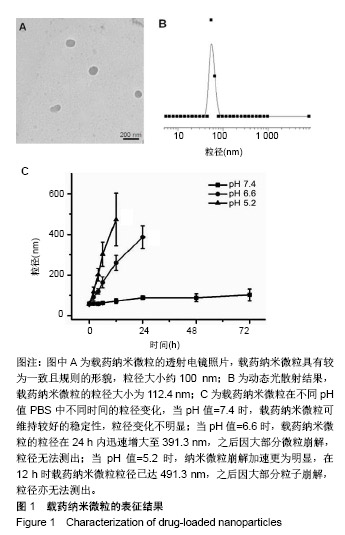
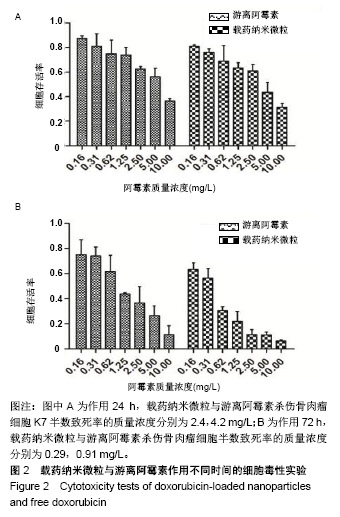
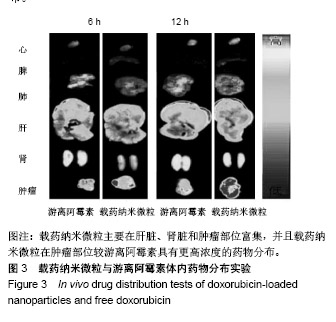
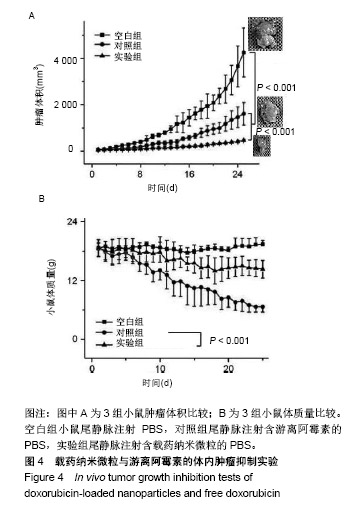
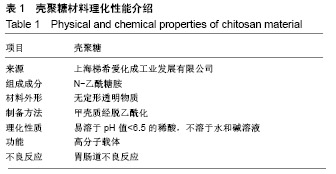
.jpg)